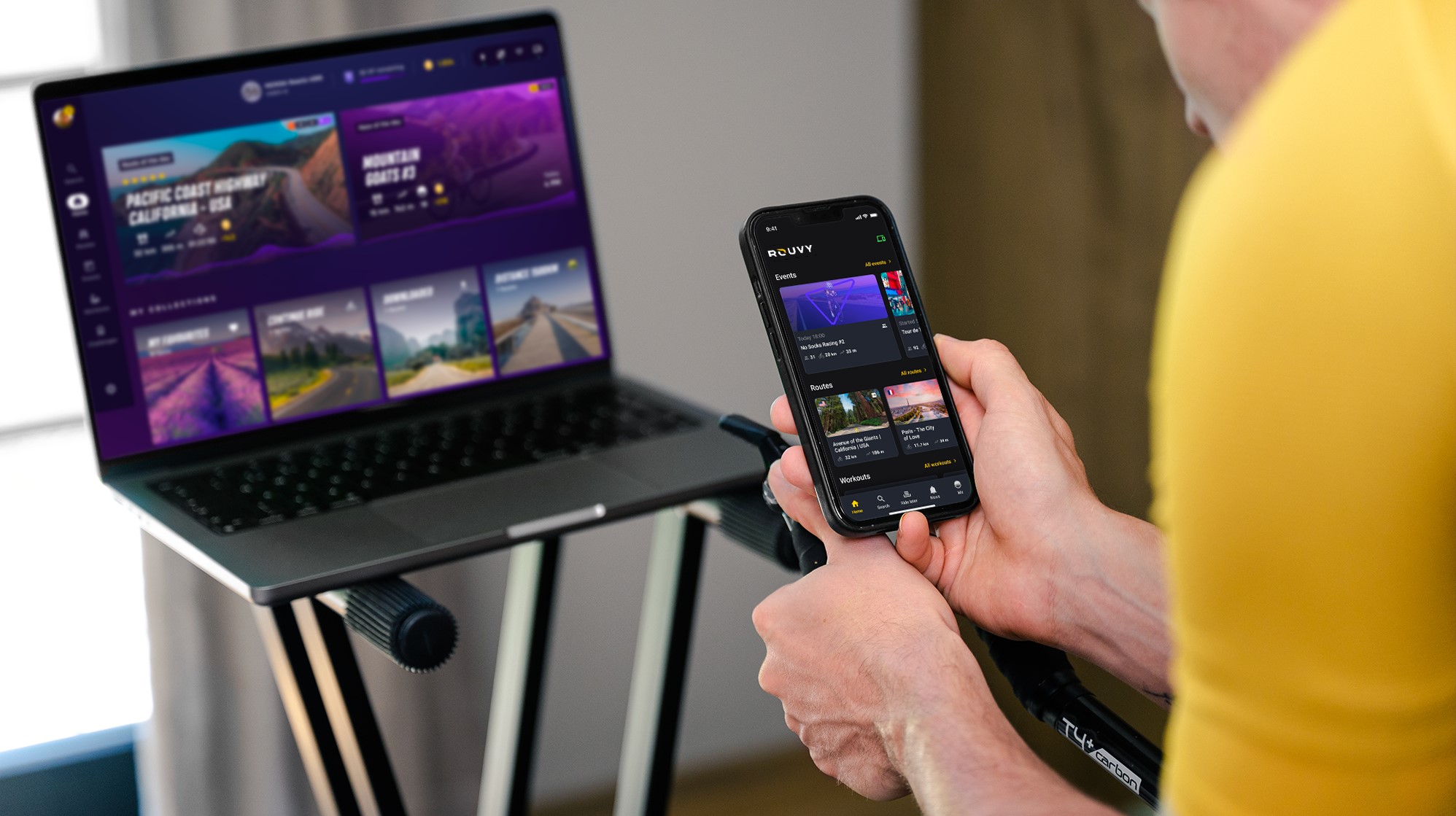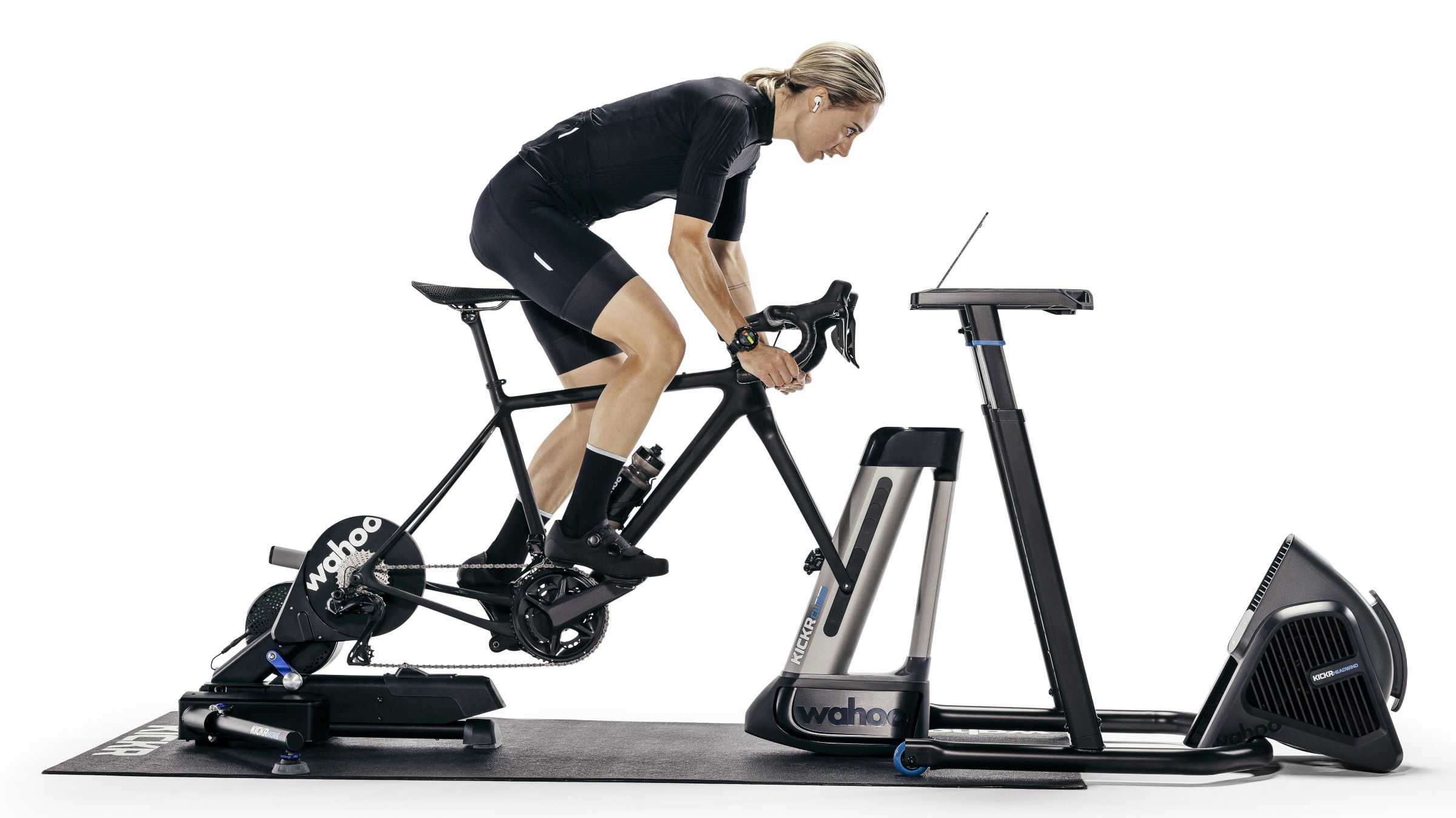How it works: The science behind indoor cycling calorie burn and physiological adaptation
Indoor cycling can boost your performance once you head outdoors

Two frequently asked questions regarding indoor cycling are how many calories you’ll burn and whether you’ll lose weight.
As usual, the answer is: it depends. Ride harder and you’ll burn more calories. But it also depends on factors including your weight and fitness level.
Harvard Medical School reckons that the calorie burn rate for a 70kg rider riding indoors at around 20kph is in the region of 600 calories an hour. Increase your speed to 25kph and that might rise to around 750 calories.
That’s a rate that can be increased significantly by following a more structured workout rather than riding at a steady pace, with high-intensity interval training in particular shown to boost metabolic rate. The numbers are comparable to riding outdoors, although it’s been found that riders in general can put out more power outdoors than indoors.
The effect of exercise doesn’t stop when you stop though. An elevation of your metabolic rate has been found to be present for over a day as your body burns fat reserves, repairs itself and makes adaptations in response to your workout. It’s called Excess Post-Exercise Oxygen Consumption or EPOC.
Greater structure and focus
Riding indoors doesn’t just burn calories, it causes adaptations to your body that help you to increase your performance when riding outdoors. We sat down with Mac Cassin from Wahoo’s sports science team to talk through how the way your body reacts to riding indoors can help your performance outdoors.

First up, indoor cycling is usually more intensive than riding outdoors. There’s less downtime and fewer things to divert your attention from your riding. It’s easier to follow an interval session and hold a consistent power output than outdoors, particularly if you ride somewhere like the UK where roads are often undulating and there are few really long hills to train on. On a trainer, you can ride a road that never goes downhill.
The latest race content, interviews, features, reviews and expert buying guides, direct to your inbox!
The more structured nature of much indoor riding results in greater improvement in performance than an outdoor ride, as it tackles specific aspects of fitness better.
In terms of the work output, there’s no difference between riding at 200 watts indoors on the trainer and riding at the same power output outdoors. It’s often easier to put in prolonged efforts at higher intensities indoors than outdoors though.
Heat adaptation
But, says Cassin, one of the major benefits of riding indoors comes from the aspect that many riders find most uncomfortable when riding the turbo, namely the heat build-up. Thermoregulation is different indoors from outdoors, where the airflow helps to keep you cooler, even if you have an array of fans pointed at you when on your turbo trainer.
Cassin points out that the human body is around 25 per cent efficient in converting input energy to work. That means that for a 200-watt power output, your body is consuming 800 watts – the remaining 600 watts are dissipated as heat.
That’s a lot of heat energy, not much less than a microwave oven or a small electric fire.
Your body adapts to the excess heat by increasing plasma volume to help carry it away from your core and, says Cassin, that in turn leads to increased cardiac output to move the extra blood around your body, which over time can result in an increase in VO2 Max.

Cassin himself has experience of the benefits of training indoors. A few years ago when he was racing, he says, he broke his collarbone, forcing him to train indoors while it healed. Once he was able to head outdoors again, he did a series of personal best rides and collected a string of KOMs.
Cassin also emphasises the importance of controlling your breathing to make you a more efficient rider. Most people, he says, tend to take quite shallow breaths. As your workload increases, there’s a threshold where you breathe more and more quickly without a proportional increase in your work output.
The muscles in your diaphragm that control breathing, as with any other muscles, need to be worked to perform at their best, he points out.
Cyclists can benefit from working to take deeper breaths when riding at lower intensities so that breathing rate rather than depth changes as workload increases. This makes it easier to gauge when you’re reaching your limit. Again, it’s easier to concentrate on this indoors than out.
Cassin also points out that the most efficient cyclists are those who appear the most metronomic as they ride, rather than appearing to struggle with the bike in the manner of Thibaut Pinot. It too is something that is a lot easier to focus on when riding the trainer than when riding outdoors, Cassin concludes.
Paul has been on two wheels since he was in his teens and he's spent much of the time since writing about bikes and the associated tech. He's a road cyclist at heart but his adventurous curiosity means Paul has been riding gravel since well before it was cool, adapting his cyclo-cross bike to ride all-day off-road epics and putting road kit to the ultimate test along the way. Paul has contributed to Cyclingnews' tech coverage for a few years, helping to maintain the freshness of our buying guides and deals content, as well as writing a number of our voucher code pages.
